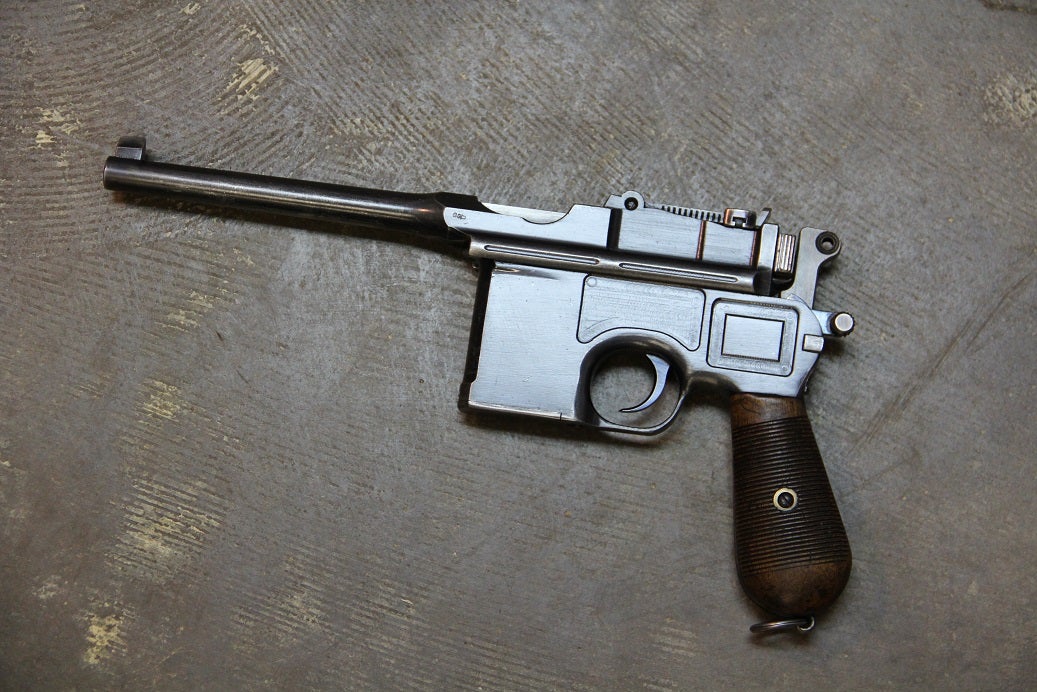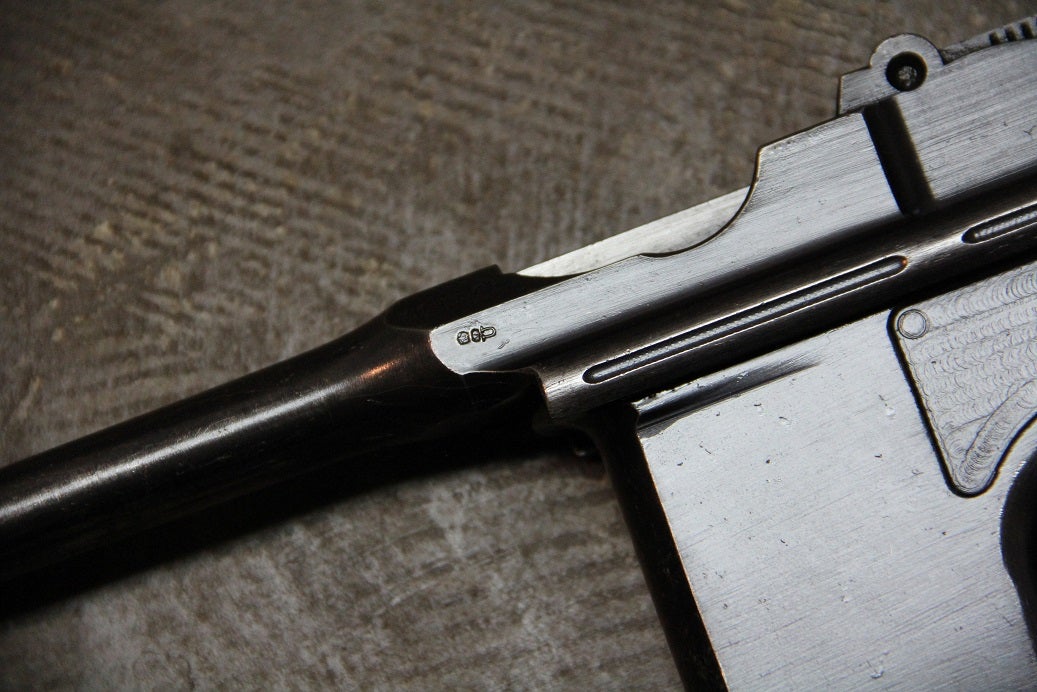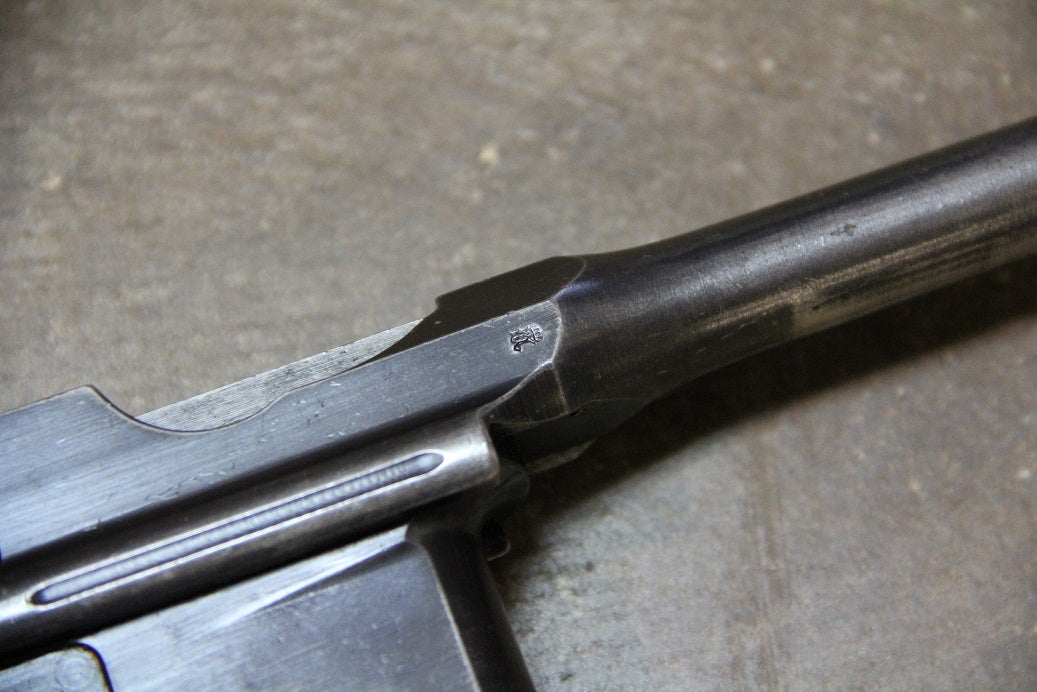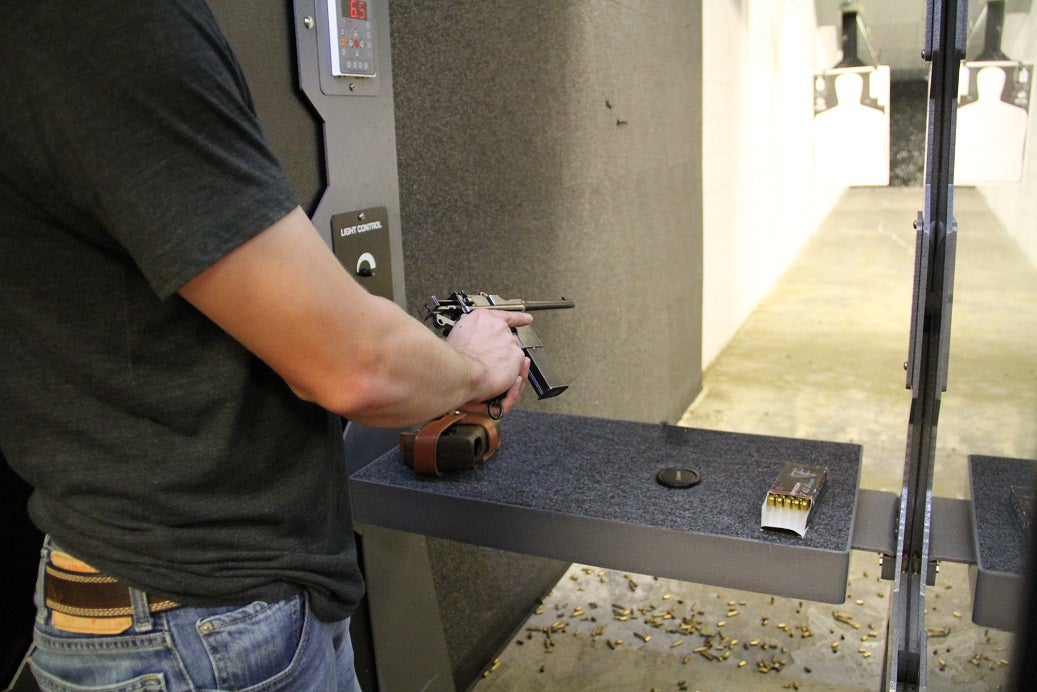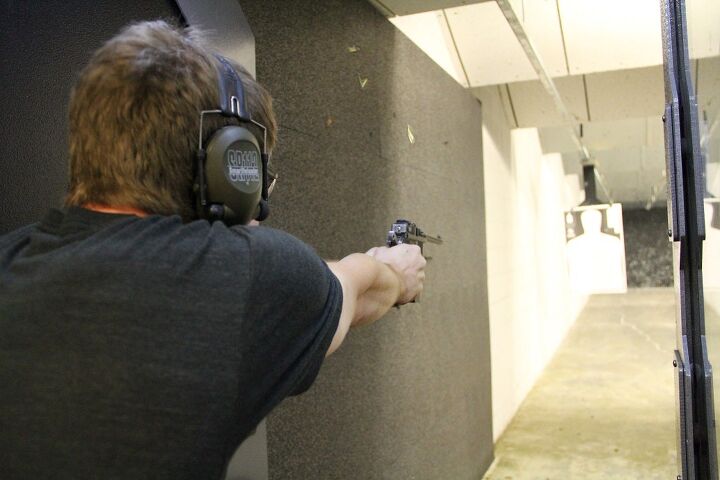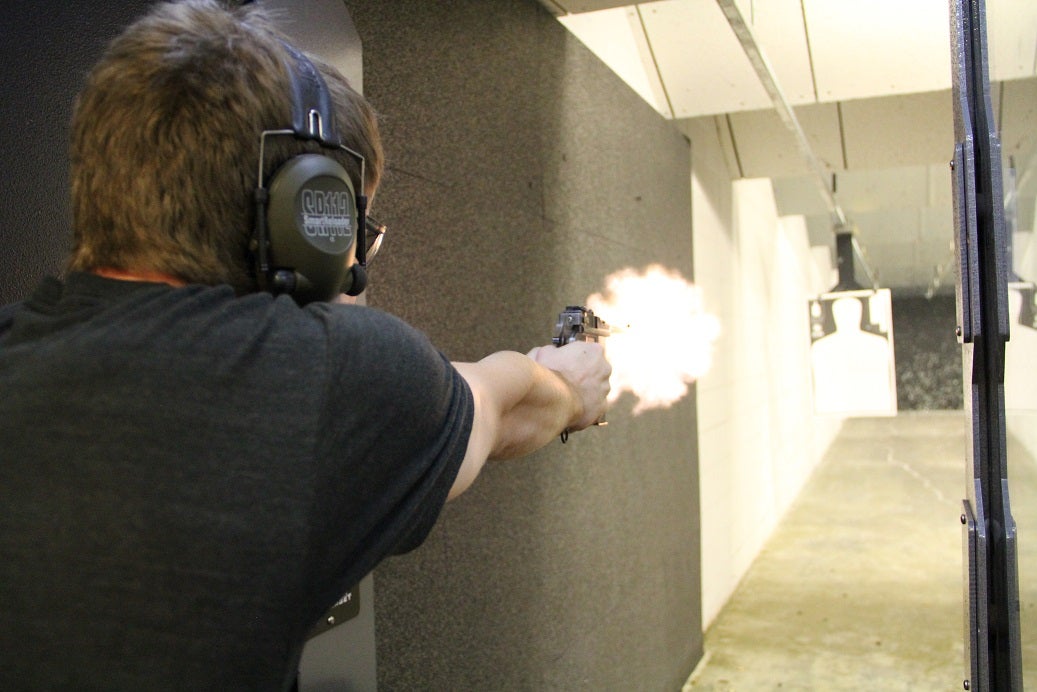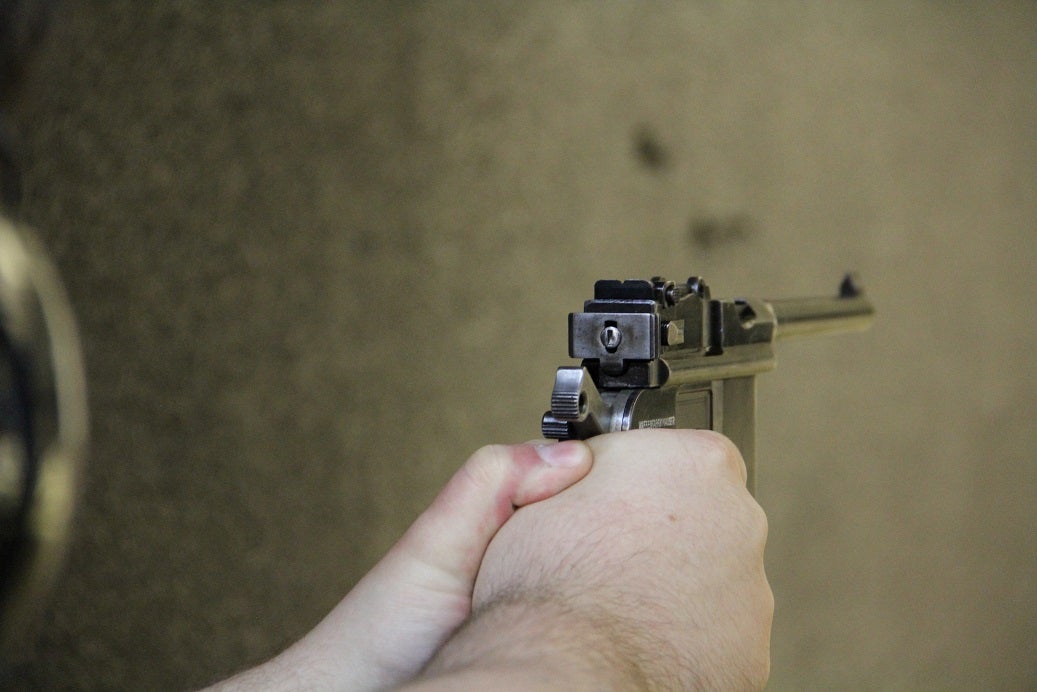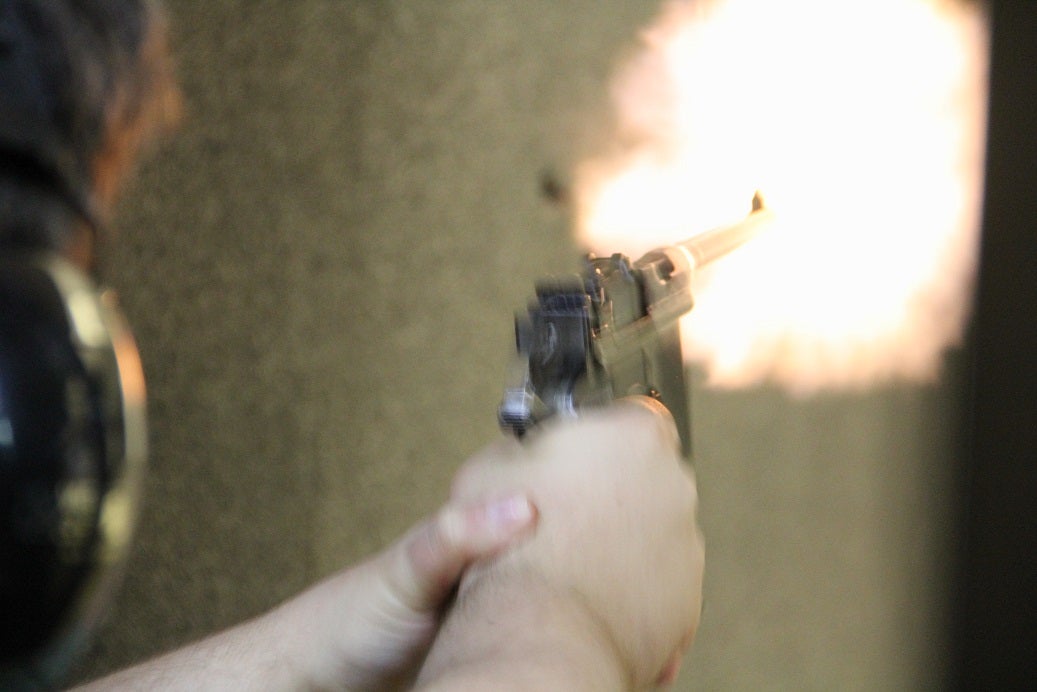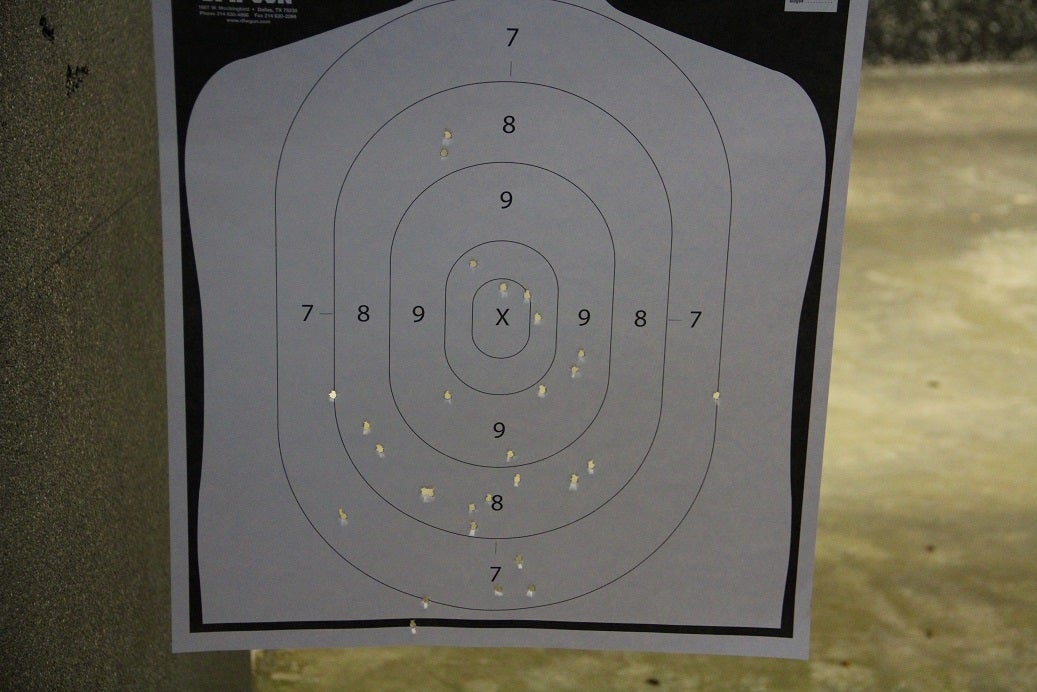**Scroll to the bottom for video of the M712 shooting full automatic**
The Mauser “Broomhandle” pistols are about as steampunk as you can get with a factory stock firearm, but their unique appearance is only a part of their allure. The Broomhandle family provides an incredibly unique shooting experience that is emulated by no other firearm. The power, the muzzle flash, and the fascinatingly complex mechanism make these, in my opinion, one of the most outstanding pistols to fire. These guns were so high tech at the time of their release that even young Winston Churchill used one at the Battle of Omdurman and claimed it saved his life. Relative to the time in which it was introduced, 7.63x25mm (also called .30 Mauser) was an incredibly powerful handgun round as well. With the C96 models, you put in ten authoritative rounds of ammunition via stripper clip and prepared to dispatch enemy personnel.
If you own a Broomhandle or have any interest in acquiring one, there are a few things to look for. This model is a standard C96 made in 1916-1917 that cost me a pretty penny.
The proofs on the left side of the gun are the double crown over U proofs of the Oberndorf proof house:
All Broomhandles typically have these marks. A small mark on the other side is what a collector really wants:
This is a military acceptance stamp and it indicates that the pistol was accepted into Prussian military service in WWI. Other factors to consider when buying a Broomhandle include finish, matching numbers, bore condition (notice you cannot swap barrels as it is part of the upper receiver), and date of manufacture. Holding one of these relics in your hands is a very blunt reminder of how far semi-automatic handgun design has progressed.
Perhaps the most coveted of the Broomhandle pistols is the rare model M712 “Schnellfeuer”, or “fast fire” in German. The M712 is only slightly different from its semi-automatic only cousin in that it has a select-fire mechanism as well as a detachable 10 or 20 round box magazine (although it is important to note that some semi-auto Broomhandles did come with detachable mags). The principle behind the M712 was the same as the “Artillery” model Lugers; Issue these small, high capacity pistols to artillerymen or non-skirmishing troops whom a rifle would burden. The idea was that if the enemy was to push past the front line troops and advance on your position, you would have a rapid fire high-capacity firearm with which to defend yourself against light infantry armed with bolt action rifles (typical of the period). Of course submachine guns were in use late in World War I (and termed “machine pistols” by the Germans) but they were issued on a very limited basis, and the newly developed Thompson submachine gun sat in port ready to hit the front as the war ended.
The M712 was developed curiously in 1933, a time when submachine guns had been very well established, but engineers decided to tinker with the C96 mechanism to try and make it into a baby submachine gun. I like to think that this was after a few drinks at the local pub and a few “I bet you won’t” were thrown around. It was Astra in Spain who conceived the idea of the full auto Broomhandle in 1928, but Mauser picked up the idea and ran with it. From 1932 to 1936 almost 100,000 full auto M712 pistols were produced which netted a healthy profit for Mauser. The M712 was almost entirely intended for export, but it did see limited use by the Germans in WWII. Our own Nathaniel F. accompanied me on a range trip and I asked for his opinion on the pistol in a historical context and the shootability as well, which you can read below.
So what gives? Why are there so few in circulation? Well good old American bureaucracy is the answer. The 1934 National Firearms Act imposed a $200 tax on the transfer of any fully automatic firearm (and in 1934 $200 was roughly equivalent to $3,500 today). This high tax made importing M712 pistols impractical and not cost effective. Even if you were a man of means back in the day, you would have probably spent your $200 + the cost of the gun on a Thompson or a more substantial firearm. That said, there are quite a few dealer samples in the USA (imported between 1968 and 1986) and presumably a few transferables (although I do not believe I have seen one for sale) as they well could have been imported and registered before 1968 or amnesty registered by veterans who brought them back during the ’68 amnesty.
So the history lesson is over. Let’s shoot it!
Finding 7.63×25, or .30 Mauser can be difficult, but you can reload 7.62×25 or 7.62 Tokarev cases (do not use Tokarev ammunition in a Broomhandle, as the round is much hotter and can damage your firearm).
Hitting the range with this strange little gun is awkward and intrigues other shooters as you unpack the gun, mags, a holster/stock combo, and a few stripper clips. Nobody knows quite what to think as you awkwardly attach what looks like a canoe paddle to the rear, but when you pull the trigger the high cyclic rate and blinding muzzle flash will get you all kinds of jaw dropping looks!
The high bore axis, odd shape, and blunt grip make the M712 difficult to control:
Even pointing the gun is very strange:
And when you let loose, the brilliant muzzle flash and high cyclic rate provide an incredible experience:
Did I mention the muzzle flash?
Nathaniel also gave it a go:
We practiced and were able to get rounds on paper in bursts, but we found that the first shot or two are always low due to over compensating for the recoil:
On the M712, Nathaniel said the following comparing it to a select fire Glock we shot that day:
“The Schnellfeuer was a more difficult weapon to handle in full auto, in part because of its characteristic grip and high bore axis. However, unlike the Glock, it did come standard with a shoulder stock which, though I did not fire it with the stock attached, I am sure would have improved its shooting characteristics. The weapon worked very well, so long as a firm grip was kept on it, and unless one was foolish enough to hold it with the non-dominant thumb wrapped around the dominant wrist, hammer bite was surprisingly not an issue. For its faults, I could see this being just the ticket for early trench operations in WWI, at least until purpose-designed submachine guns were introduced. Given that, it’s strange that the select fire Mauser handgun variants weren’t introduced until the late 1920s. Even so, as a semi-automatic handgun without a stock, or a lightweight submachine gun with one, I still think it could be useful, as long as the user had the discipline not to try to use it as a full auto handgun.” Well said Nathaniel.
My regular shooting buddies and I came to the same conclusion when trying to master the M712:
So that’s that. This odd gun really is a pleasure to shoot and makes a fine asset to any collection. Also right now I am having a custom made Kydex concealed carry holster made to make this my everyday carry gun too!
Not really, but that would be funny as hell.
 Your Privacy Choices
Your Privacy Choices

